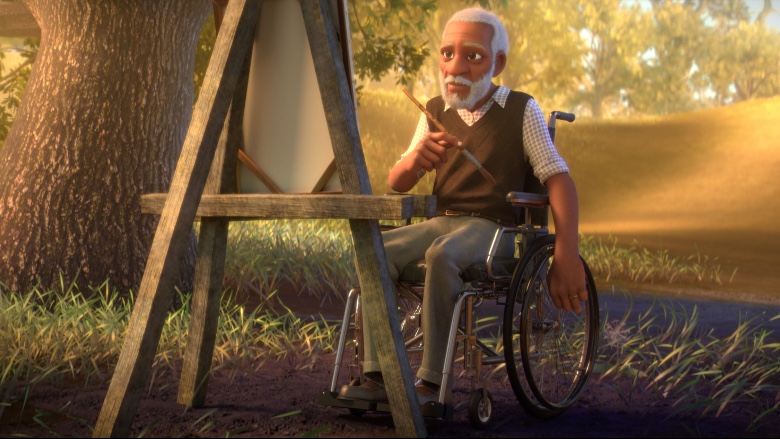
With the Oscars drawing ever closer – despite being later than ever – we’re going to try to cover a lot of the artisans and crafts in the mix. One thing we haven’t been covering nearly as much in recent months is animation, so in order to rectify that, this will begin our series of interviews with animators who have made significant animated shorts worth watching.
In this case, it’s the first of three Netflix animated shorts that are in the mix for consideration in the Animated Shorts category at the Oscars, Frank E. Abney III’s Canvas. It’s a touching story of an elderly painter trying to cope with the grief from losing his wife, and the influence he has on others in his family and vice versa.
Abney has been working at Pixar Animation for a number of years, contributing as an animator on the recent Soul, The Incredibles 2, Coco and others. He also is one of the founders of Rise Up Animation, a group dedicated to supporting black artists in animation, and executive produced last year’s Oscar Animated short winner, Hair Love.
Below the Line spoke with Abney last week over Zoom, covering Canvas, Rise Up Animation as well as a little bit about his work on Pixar Animation’s Soul.
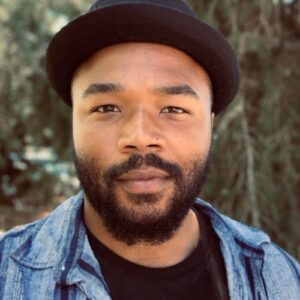
Below the Line: Canvas is a wonderful movie, and you’ve worked on a lot of great stuff at Pixar in recent years, so why wasn’t this a Pixar short? Did you pitch it to them or were you trying to keep it separate from your regular work life?
Frank Abney III: Actually, I was already working on it before I started at Pixar. I guess the idea crossed my mind, maybe I could, but then I felt I already had momentum with it, so I didn’t want to have to take a step back and redo some things. It was also one of those things where it was such a personal story, just wanting to grow in my own way as a filmmaker and keep learning to find our own resources and ways of doing it.
BTL: Did you have a team of animators? How big was the team working on it?
Abney: Initially, it was in the 20s, how many people were on the film. We did have an animation team, including myself. It was made up of different colleagues that I’d worked with, previous students of mine. I try to keep a library of great work that I’ve noticed and logged away if there’s ever that chance of needing that talent I could pull from.
BTL: Where were you teaching?
Abney: I was teaching at a place called Animsquad, it’s online animation school. I’d been teaching there and another place called Animschool, an animation collaborative, a few places, just trying to help other people that had been wanting to get into animation. Just to give them the tools needed in terms of different skill sets, too. I taught a beginner class, intermediate and expert, I’m just trying to give back whenever I can.
BTL: I want to talk about Canvas, but I want to find out a bit about your own background and how you got to where you’re at now.
Abney: I was always drawing as a kid. When I saw The Lion King, that was the one that really set a fire to me, I think. I lost my Dad when I was five. That was the first film where I really saw myself in a different — even though I’m not a lion. It was the idea of identifying with the story, with this cub losing his father and having to step into this new responsibility. That’s kind of how I felt, being the quote-unquote “man of the house.” It was intimidating, and there’s fear, and I really connected with it. That kind of lit the fire for me to want to do this at some capacity. I didn’t know I wanted to be an animator yet, but I would always pay attention to the performances in movies, the actors. There’s a point where I wanted to be an actor, so wanting to tell stories, specifically using the animation medium, it just seemed like the logical choice that an animator would fit what I was into — the drawing, the acting, and performance and story. That was a nice marriage of all those together. I worked at a small game studio right out of college and worked on a TV show pilot, and then back to games on the Tomb Raider franchise. We did a reboot that launched our team, and then from there I jumped over into film, which is where I was trying to go. Throughout the previous jobs, I was always working on my own stuff, waking up at 4:30 or 5 in the morning, working on my animation then going to work and coming home, and then I got the opportunity at Disney and DreamWorks and now started at Pixar.
BTL: So you were doing animation from when you woke up to when you went to sleep?
Abney: That’s what it was for a while, yeah. It’s that quote, “If you do something you love, you never work a day in your life.” I can’t see myself doing anything else.
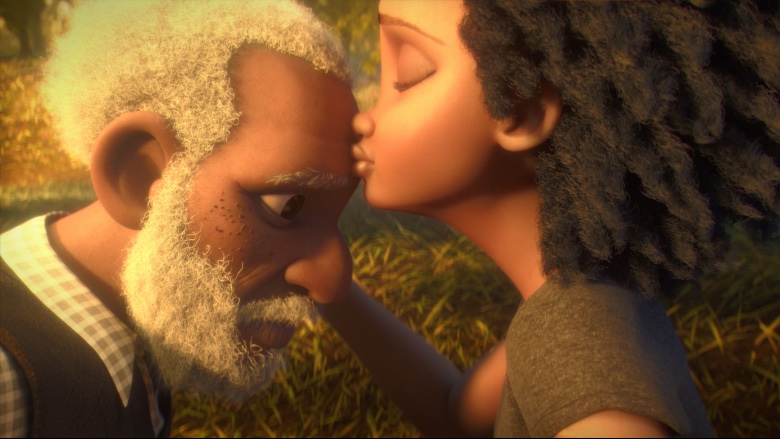
BTL: How long ago did Canvas come about? You mentioned the passing of your father and how you got into drawing as a kid. I hear that, and I think about stuff in the movie that could have been inspired from that. How long ago did you decide to make this story into a short?
Abney: For the short, as I was navigating the industry, I was having a pretty rough time getting into film. All the things that you don’t learn in school, I was experiencing as I was trying to navigate and make my way to where I wanted to be. I was living at home, and my niece was very young. Just experiencing how she navigated. Just how kids are, they navigate with this carefree nature, and are able to bring joy without even trying. Just seeing that, it was inspiring for me and just kind of like, “Why am I holding all this baggage on my shoulders?”
It helped me break loose of that and just kind of get focused on what I wanted to do, which was create. I knew it had to be something personal, so one of the recurring things that hits me, even to this day, was the loss of my father. I knew I had to pull from that in some way. I was always seeing how my mom navigated the situation with having raised us by herself – my sister and I – and just seeing how that loss affected her and how it would come up in different ways, and how parts of herself would come out in different ways that I didn’t know — these artistic endeavors that she had. At one point, she was in a play, she’s singing in a choir, and she would ddoodle when she’s on the phone. I would look at the drawings, and they weren’t half bad.
I always wondered, if there was something that she lost that she wouldn’t get back to that part of herself. Then also thinking about my grandfather — her dad — who I was around. He didn’t live that far from us and just being kind of withdrawn. I think it’s similar to just an age group that men had back in that era. I wondered about the backstory there, and all those things contributed to what became the main story for Canvas.
BTL: Was all of this mostly done independently when you were getting it all together yourself? What point did Netflix come into the picture? Was the short already done?
Abney: It was already done when we talked to Netflix about getting it on the service, but they actually reached out two years ago, when I released the characters on Twitter, I got a message saying, “I think that this is something that we should support or get behind in some way.” It was something along those lines, and we just kept in touch. When we hit a milestone, I would show and tell others how the film was going and with the hopes that something would work out. But yeah, everything was independent though. It was myself for the first couple of years where I was just trying to work the story out and get some artwork done with friends of mine that I worked with. Then my friend Paige Johnstone came along as producer. I worked with her at DreamWorks on The Boss Baby, and then she later came to Pixar, and we worked together on Coco as well. Seeing how she worked with the animation team and how organized she was and just on top of her stuff. It was a very easy choice having a producer help wrangle this film and help us get it done. We were all working full time, and I needed some extra hands.
BTL: I really loved the visual style of the film and how it goes from painted animation to very realistic humans. CG humans used to look clunky and awkward, whether it’s in video games or movies, but these humans really emote, so how did you develop that style and the design for the film?
Abney: We definitely had some reference. For the grandfather, for instance, I actually was referencing Bill Cobbs – a little bit of Bill Cobbs, Morgan Freeman and Dick Gregory. There’s a little merging of all three of those. It started with Dick Gregory, and there’s a little bit of myself probably sprinkled in there just as you do it without even knowing you’re doing it. I had an initial drawing of this grandfather character, and then I ended up getting a character design as a reference — Randy Bishop is his name, and just letting, letting him go at it. He brought forth some options. That was kind of how that process worked, but with humans, especially black characters, I wanted to make sure that we didn’t water down any of our features that make us unique. There’s a fine line when handling black characters, any characters of a specific ethnic background where you can go too far where it’s offensive. But if you don’t go far enough, that can be offensive as well, because you’re not representing. You don’t want that kind of cookie cutter character where you just slap a different skin tone on him where all of a sudden one minute they’re black or they’re Mexican or Asian. You gotta bring more specificity to what makes that character unique. We definitely went down that road.
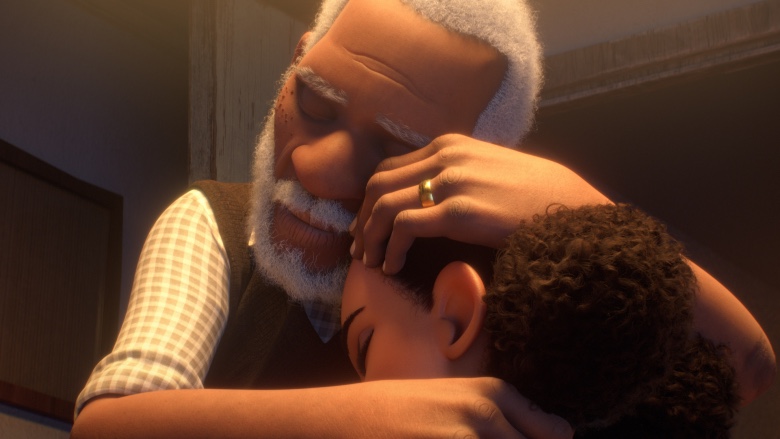
BTL: Is it hard to get the right lighting and color with animation? I’ve spoken to a few black actors and cinematographers who have said it’s hard to light properly for black skin. Do you have that problem in animation as well or is that easier to get around?
Abney: I think for the lighting in general. We first started with just lighting the scene itself. I pulled a lot of stuff from live action, and some things were from black cinematographers like Bradford Young and how he handled light in things like Selma or Pariah, these films that I watched before starting on Canvas. When we got to integrating the characters in the scene, there was a little back and forth. Sometimes the character’s skin would look too light or maybe it was too red, just trying to find that sweet spot in there how the light reacts. The beauty of working in animation medium is you have full control over how the skin texture is and how much light you allow to come in, compared to live action where you can’t.
BTL: Right, you have a lot of elements you can’t control. I want to ask about Rise Up Animation, which sounds amazing. How has that been going, and do you see a lot of progress with that?
Abney: Yeah, that’s been great, because it started as a way for us to just help people of color, bridge that gap between themselves and the industry. Sometimes, it can seem like such an unattainable thing working in this field, especially thinking myself growing up in the Bay Area and thinking of the quote-unquote “Hollywood,” and how do people even get started in that? For me and my education coming into it, I got my degree in San Francisco at art school, but it was really when I took my education further, through an animation mentor, actually learning directly from animation professionals that were currently in the industry. That was the big thing for me that made the change. That’s basically what we’re doing. We’re pairing people up with industry professionals to give that feedback, whether it’s on their work, animation modeling or visual development, even just simple industry. It’s been going well – we just became a nonprofit, working on things like scholarships and donations and all these things that contribute to making animation such an expensive endeavor, kind of ease that burden a bit.
BTL: You spoke earlier about teaching and about navigating the business, but when you go to school, after they teach you the technical stuff, do they teach things like how to go to Pixar and present your best work and how to fit in, things that are very important.
Abney: That’s where working and learning directly from other industry professionals was key, because we didn’t have those classes where you’re learning about the industry and how to navigate that stuff. I learned that stuff on a more personal level with other animators that had been doing that for me. That’s kind of what I’ve tried to do in my classes when I teach. There’s the animation education, but I also want to talk about the real stuff in the industry as well. We go into it with a certain vision in mind of what this industry is or where it could be. You get a rude awakening sometimes of what some of that can really be. There’s the beauty in it that I want to express as well. Being able to provide for your family and make a living through art and telling stories and expressing yourself, there’s something magical about that. You can’t take that for granted.
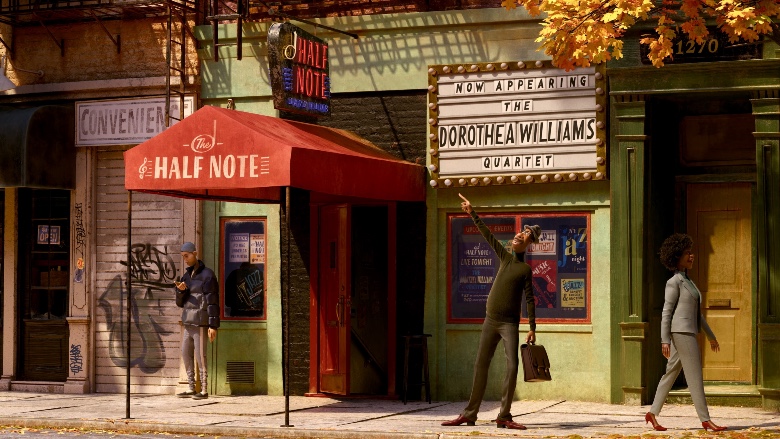
BTL: You mentioned how The Lion King influenced you, and I can see Canvas or Soul having a similar effect of leading younger kids down the path to animation. Many kids are already doing stuff like that just on their tablets now. I also wanted to quickly ask you about working on Soul and some of your own favorite scenes that you animated.
Abney: Some of the ones I liked working on the most… there’s the initial scene where Joe and Curly meet up for the first time, where he goes through the door of the Half Note, and he’s rushing down the stairs. He gets himself ready, takes his hat off and takes a breath, and he’s wiping the sweat off himself, and then he meets up with Curly. He and Curly are talking as they’re going down the stairs, and he sees Dorothea in person playing, and he’s just in awe of watching her. I think that was the first scene that I animated. It was one of the first sequences that was launched in animation, too. That always stood out to me, because it was the first moment I’m animating on a film with a character that looks like me as the lead. The whole scene that I got to touch. Another one that stands out is there’s a moment when Joe’s tried to get his spot back in the band, toward the latter part of the film. He busts through Dorothy’s dressing room, trying to tell her to let him back in the band, or “This is going to be the biggest mistake of your career.” And she’s like, “Oh, yeah, Why is that?” I just animated Joe in that scene, but he’s telling her that this is his reason for living, and no one’s gonna stop him. “This is it.” It’s one of those things that I really identified with, because I always feel like we can’t hold our growth. We can’t hand that over to studios or people that can give us the “yes” or “nos” of creating stuff. Sometimes, we just have to have that strength to just, “Okay, if this is not gonna work out, I’ll find a way to do it myself then.” Just not letting anything stop you, having that drive and purpose and keeping that at the core of what moves you. That thing that brings you out of the hole when you’re having those moments of questioning yourself and wondering if this is what I should be doing, or whatever it takes. There’s other scenes, too, but those were the top two I think that stood out to me of the ones that I worked on that I really felt something.
BTL: I know that most of the film festivals didn’t happen or were virtual last year, but were you able to show Canvas at one before COVID shut everything down?
Abney: By the time we finished, we did play in the Spark Festival, but that was the only one that we played in. We were hoping that there would be some avenues by the time we finished, but it was so late in the year. It’ll be okay. We set up for a theater run, but that didn’t end up, but it was okay. We got to play in the festival, and then our Netflix release was coming up. That’s a pretty damn good platform to release on to show it to the world. It landed where it needed to be.
You can watch Canvas on Netflix, and of course Soul is still on Disney+.
All photos courtesy Netflix.





